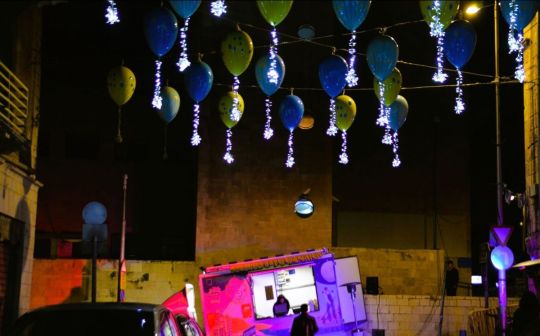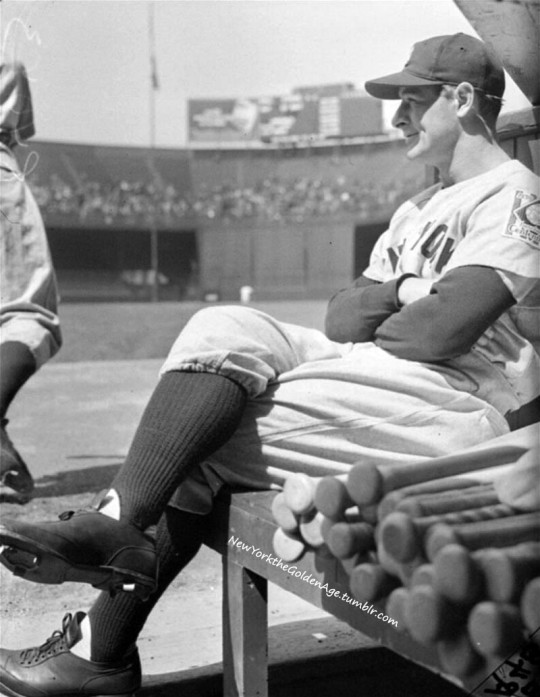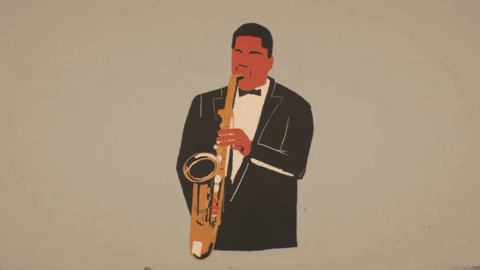#⟨⟪ als ⟫⟩
Text

Alyseleah photographed by Jeannette Williams, styling by Courtney Francisco
625 notes
·
View notes
Text

Lou Gehrig died on June 2, 1941, two years after being diagnosed with amyotrophic lateral sclerosis (ALS). The following day, ballclubs paid tribute to him before their games began. This is Ebbets Field, with the Cardinals the visiting club.
Photo: NY Daily News
#vintage New York#1940s#Lou Gehrig#tribute#Ebbets Field#Lou Gehrig tribute#June 3#3 June#ALS#vintage baseball
86 notes
·
View notes
Text
New research out of London, Ont.’s Western University is shedding light on a potential cure for ALS, in which the targeting of the interaction between two proteins can halt or fully reverse the disease’s progression.
According to a news release from Western University on Monday, a team of researchers, led by Dr. Michael Strong, have discovered a potential path toward a cure for amyotrophic lateral sclerosis, also known as ALS.
“As a doctor, it’s been so important for me to be able to sit down with a patient or their family and say to them, ‘We’re trying to stop this disease,’" said Strong, Arthur J Hudson Chair in ALS research at Western’s Schulich School of Medicine & Dentistry.
Continue Reading.
135 notes
·
View notes
Text


actually I’m gonna combust
340 notes
·
View notes
Text

Alsius Vafer (@ask-alsius-vafer) with a white coat contribution from @kiwiplaetzchen 😏 He was a treat to draw, I nearly drowned in his eyes while working on this 💙
#Hogwarts Legacy#Hogwarts Legacy MC#my art#id kill for those eyes#id kill for his hair#love him#Bless you for creating such a pretty healer 🥹#als
35 notes
·
View notes
Text
Amylyx Pharmaceuticals said Thursday it will withdraw its amyotrophic lateral sclerosis (ALS) drug from the market in Canada and the U.S. following its failure in a late-stage clinical trial.
The ALS drug, branded Albrioza in Canada and Relyvrio in the U.S., was approved in both countries in 2022.
ALS causes progressive paralysis and death. Each year about 1,000 Canadians die from the disease and about the same number are diagnosed, according to the ALS Society of Canada's website. ALS affects roughly 60,000 people in the U.S. and Europe.
There are few options to treat the potentially fatal disease.
Continue Reading
33 notes
·
View notes
Text
Angels fall sometimes
His father hit him and he didn't know his son is dying
#whump#whumper#asian whump#emotional whump#suffering#drama#whumpee#asian whumper#chinese drama#bromance#Angels fall sometimes#lin yi#injured#hurt#sick male lead#illness#ALS#disease#brothers#best friends#whump community#whump comfort#whump concept#whump compilation
32 notes
·
View notes
Text
My Little Brother Got Diagnosed With ALS
Please donate if you can, right now he's trying to get a wheelchair
👍👍
22 notes
·
View notes
Text
Good News From Israel
In the 25th Feb 24 edition of Israel’s good news, the highlights include:
IDF soldiers can fly for free on Israel’s National Airline.
Some “amazing but true” stories from Gaza.
Clinical trials show Israeli ALS therapy slows cognitive decline.
Three Israeli ag-tech innovations that could prevent world hunger.
Europe is investing in Israeli green technology.
Israel had international success at swimming, weightlifting and 4 more sports.
A 2000-year-old stone box was unearthed on Jerusalem’s Pilgrim Road.
Read More: Good News From Israel

In Israel, we're slowly seeing the country emerge from one of the darkest times since the Holocaust. Evacuees are returning to their homes in the South as the threat from terrorists in Gaza is being eliminated. The transformation from darkness to light is reflected in much of last week's news.
The dark days of displaced Israeli families have been made a little brighter thanks to donations and kind hosts. A wounded Fauda TV star has been able to see the light of day after being discharged from hospital. A Hamas terrorist emerging from a dark tunnel shaft with a bomb was seen just in time. And from the dark despair after seeing Hamas murder his wife, a brave, stateless Bedouin and his nine children can have a brighter future as permanent residents of Israel.
The usual weekly Israeli medical breakthroughs give brighter prospects for ALS and PTSD sufferers, heart patients, and pregnant mothers in Brazil. The winter sun is shining on Israeli agricultural innovations with climate-resistant seeds, plant propagation breakthroughs, and sun-dried tomatoes on the vine. Meanwhile, Israeli technology is revolutionizing the taking of photos in poor light.
Finally, Israel celebrated some shining sporting results; a 2,000-year-old unique stone box, found near the ruins of the Temple in Jerusalem, is now seeing the light of day; and an Israeli fashion designer played the Israeli National anthem Hatikvah in New York, to accompany the showing of his Autumn collection, aptly entitled "Illumination of Hope". Let's hope that the rest of the world also "sees the light".
The photo (TY Sharon) is of an illuminated Jerusalem street during the Shaon Horef (Winter Noise) festival.
#ALS#Bedouin#Brazil#climate#diabetes#El Al#Ethiopians#evacuees#Fauda#Gaza#good news#Hamas#Houthis#IDF#Israel#Jewish#PTSD#Qatar#Teva#volunteers
31 notes
·
View notes
Link
Sathya Dhara Kovac, 44, chose to die this week, even though she didn't want to go just yet.
The Winnipeg woman's death was facilitated by professionals through Manitoba's medical assistance in dying program.
Kovac lived with amyotrophic lateral sclerosis, a degenerative disease that took her mother, grandmother and uncle. Her condition was worsening, but she felt she had more life to live — just not enough home care support to do so.
"Ultimately it was not a genetic disease that took me out, it was a system," Kovac wrote in an obituary to loved ones.
"There is desperate need for change. That is the sickness that causes so much suffering. Vulnerable people need help to survive. I could have had more time if I had more help."
Continue Reading.
Tagging: @politicsofcanada
#MAID#ALS#cdnpoli#canada#canadian politics#canadian news#canadian#Eugenics#Homecare#Ableism#Healthcare#death tw
329 notes
·
View notes
Text

On May 2, 1939, Lou Gehrig took himself out of the Yankees' lineup after having appeared in 2,130 consecutive games. He was suffering from amyotrophic lateral sclerosis (ALS or, as it came to be known, Lou Gehrig's Disease), which would kill him two years later.
Photo: Associated Press
#vintage New York#1930s#Lou Gehrig#NY Yankees#ALS#amyotrophic lateral sclerosis#vintage baseball#May 2#2 May
64 notes
·
View notes
Note
[Upon waking, on your bed shelf rests a neatly folded bit of parchment weighted down by a familiar whistle, its chain neatly coiled around it.]
Fresh,
In case you were looking for it. Found it on the floor behind the curtain this morning.
Als
PS I promise I'll make it down to the Great Hall for dinner.
Felix woke slowly, the soft rays of early morning sunlight creeping through the cracks in the curtains, warming his face. He yawned lazily, rubbing the sleep from his eyes with the back of his hand before scratching his head, his hair a tousled mess from the night.
His arms were still wrapped tightly around his pillow, a habit of cuddling anything within reach during the night. Reluctantly, he released his grip, rolling onto his back and blinking up at the ceiling with the fog of sleep still clinging to his thoughts.
He poked his head out from behind the heavy curtain, glancing around the room. The other beds were neatly made, and the familiar sounds of morning hustle were absent. Als and Andrew must have let him sleep in, he realised, grateful for the small kindness. The Ravenclaw stretched his limbs, feeling the satisfying pop of his joints as he moved. That’s when something caught his eye - a glint of light reflecting in the morning sun, a shimmer on his bed shelf.
His whistle!
Felix' hand instinctively shot to his neck, only to find his bare skin. Panic fluttered briefly in his chest, a momentary hitch in his breath before he saw the neatly folded parchment beneath the whistle. Reaching out, he carefully picked up the note and the necklace with the whistle, unravelling the chain with careful fingers and slipping it back over his head, feeling the comforting coolness settle against his chest as he unfolded the parchment.
The note was simple and straightforward. Felix smiled, his eyes tracing the familiar handwriting. So Als had found it. Must have slipped off during the night. He hadn’t even realised he’d misplaced it. Typical. Felix could be an aggressive cuddler, and the whistle sometimes paid the price. Still, the relief of having it back, coupled with Als' familiar handwriting, sent a warm rush through his chest.
But it was the bottom line of the note that truly lit up his eyes. Felix' smile widened, a little gasp of happiness escaping him. Als would be there for dinner!
The future healer had a stubborn habit of skipping his meals, always buried in his books, studies, or work in the Hospital Wing. This small assurance, scribbled in Als' neat handwriting, made Felix' heart swell with a quiet, affectionate joy.
That evening, Felix found himself standing by the big door of the Great Hall, waiting eagerly for Alsius to arrive.
10 notes
·
View notes
Text

Neurotoxic Relationship
Lab-grown neural network model bearing dysregulated TDP-43 protein – a feature of neurons in certain neurodegenerative diseases – reveals accumulated NPTX2 protein, that is confirmed in the brains of patients with amyotrophic lateral sclerosis and frontotemporal lobar degeneration. NPTX2 could thus represent a novel therapeutic target
Read the published research article here
Image from work by Marian Hruska-Plochan and colleagues
Department of Quantitative Biomedicine, University of Zurich, Zurich, Switzerland
Image originally published with a Creative Commons Attribution 4.0 International (CC BY 4.0)
Published in Nature, February 2024
You can also follow BPoD on Instagram, Twitter and Facebook
#science#biomedicine#immunofluorescence#neuroscience#biology#brain#ALS#lou gehrig's disease#motor neurone disease#mnd#amyotrophic lateral sclerosis#neurons#organoid
16 notes
·
View notes
Photo

(via GIPHY)
#giphy#music#vintage#jazz#piano#vinyl#saxophone#impulse#als#verve#verve records#john coltrane#coltrane#impulse records#music sheet#a love supreme
14 notes
·
View notes
Text
Important signaling molecules called phospholipids are active throughout cells in small compartments called condensates, rather than functioning primarily in cell membranes as previously thought, according to a study from researchers at Weill Cornell Medicine. The finding helps open a new avenue of investigation in cell biology and may also be relevant to the study of neurodegenerative diseases such as amyotrophic lateral sclerosis (ALS) and Alzheimer's disease.
Condensates in cells, also called biomolecular condensates, behave like oil drops within water. They are made of proteins, and often RNA molecules, that have weakly conglomerated to form distinct globules in the cell. These globules form compartments with chemical properties that differ from those of the surrounding, watery interior of the cell.
Continue Reading.
29 notes
·
View notes


